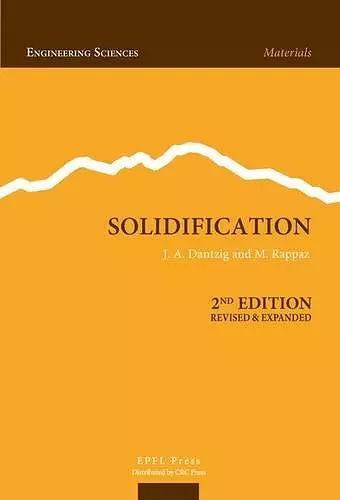Solidification, Second Edition
Michel Rappaz author Jonathan Dantzig author
Format:Hardback
Publisher:Presses Polytechniques et Universitaires Romandes
Published:17th May '17
Currently unavailable, and unfortunately no date known when it will be back

Solidification is one of the oldest processes for producing complex shapes for applications ranging from art to industry, and remains as one of the most important commercial processes for many materials. Since the 1980s, numerous fundamental developments in the understanding of solidification processes and microstructure formation have come from both analytical theories and the application of computational techniques using commonly available powerful computers. This book integrates these developments in a comprehensive volume that also presents and places them in the context of more classical theories. This second edition highlights the key concepts within each chapter to help guide the reader through the most important aspects of the topics. The figures are now in color, in order to improve the visualization of phenomena and concepts. Recent important developments in the field since the first edition was published have also been added.
The three-part text is aimed at graduate and professional engineers. The first part, Fundamentals and Macroscale Phenomena, presents the thermodynamics of solutions and then builds on that subject to motivate and describe equilibrium phase diagrams. Transport phenomena are discussed next, focusing on the issues of most importance to liquid-solid phase transformations, then moving on to describing in detail both analytical and numerical approaches to solving such problems. The second part, Microstructure, employs these fundamental concepts for the treatment of nucleation, dendritic growth, microsegregation, eutectic and peritectic solidification, and microstructure competition. This part concludes with a chapter describing the coupling of macro- and microscopic phenomena in microstructure development. The third and final part describes various types of Defects that may occur, with emphasis on porosity, hot tearing and macrosegregation, presented using the modeling tools and microstructure descriptions developed earlier.
ISBN: 9782940222971
Dimensions: unknown
Weight: 1497g
736 pages
2nd New edition